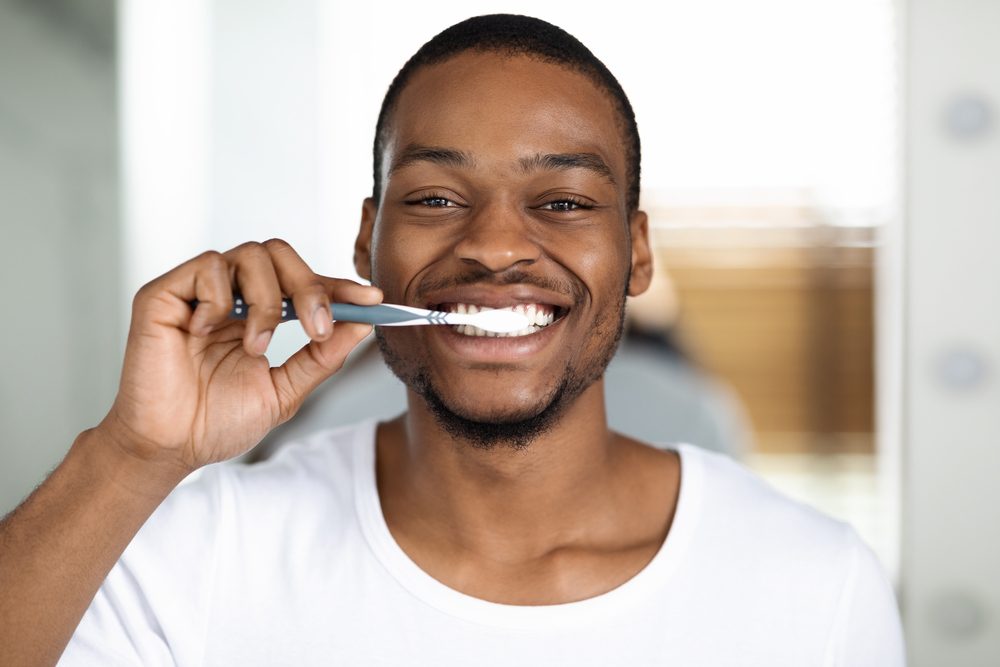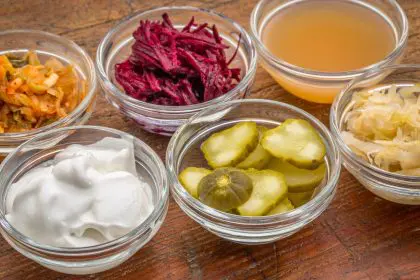We all want that dazzling white smile that lights up a room. But between coffee addictions, red wine enjoyment, and the natural aging process, our teeth inevitably pick up stains and discoloration along the way. The whitening industry knows this all too well, which explains the endless parade of expensive strips, trays, lights, and in-office treatments promising movie-star results.
What if you could achieve noticeably whiter teeth without harsh chemicals, uncomfortable treatments, or emptying your wallet? Natural teeth whitening approaches might work more gradually than their commercial counterparts, but they’re gentler on your enamel and gums while still delivering impressive results over time. Plus, many of these solutions use ingredients you already have at home.
Let’s explore the most effective natural approaches to teeth whitening that actually work, separating fact from fiction in the world of DIY dental brightening. These methods won’t transform severely stained teeth overnight, but they can significantly improve your smile’s appearance when used consistently as part of your oral care routine.
Understanding tooth discoloration first
Before jumping into whitening solutions, understanding what’s causing your discoloration helps you choose the most effective approach. Not all tooth staining responds to the same treatments.
Surface stains affect only the outer enamel layer and typically result from dark-colored foods and drinks like coffee, tea, red wine, and berries. These extrinsic stains respond well to natural whitening methods. Deep discoloration penetrates beneath the enamel into the dentin layer due to aging, genetics, certain medications, or trauma. While natural methods can still help, they work primarily on surface stains.
The good news? Most discoloration that bothers people is surface-based and can improve with consistent natural approaches. Realistic expectations matter here. Natural methods generally bring your teeth back to their natural whiteness rather than creating the super-bright artificial white seen with professional bleaching.
Your teeth develop a thin protein film called pellicle that builds up throughout the day. This pellicle layer attracts and holds staining compounds from your foods and drinks. Many natural whitening methods work by either removing this pellicle layer or preventing staining compounds from binding to it in the first place.
This explains why timing matters with whitening approaches. Using natural whiteners shortly after consuming staining foods and drinks often delivers better results than waiting until stains have set in more permanently.
Oil pulling for whitening and beyond
This ancient Ayurvedic practice has gained modern popularity for its multiple oral health benefits, including natural whitening effects.
Oil pulling involves swishing oil around your mouth for an extended period. Take a tablespoon of coconut oil and swish it vigorously between your teeth for 15-20 minutes before spitting it into the trash, not the sink where it could clog pipes.
The oil works by “pulling” bacteria and surface stains from your teeth as you swish. Coconut oil produces the best results because it contains lauric acid, which has anti-inflammatory and antimicrobial properties. The oil breaks down the biofilm on your teeth that harbors stain-causing bacteria while simultaneously lifting existing surface stains.
For whitening specifically, consistency matters more than duration. Daily oil pulling for 5 minutes delivers better results than occasional 20-minute sessions. Many people incorporate oil pulling into their morning shower routine to make the time pass more quickly while multitasking.
Activated charcoal with cautions
Arguably the most visually dramatic natural whitening method, activated charcoal creates quite the contrast when you temporarily turn your entire mouth black to achieve a whiter smile.
Activated charcoal has a negative electrical charge that attracts positively charged particles like toxins, bacteria, and staining compounds. It essentially binds to surface stains and removes them when you rinse. The porous texture also provides mild abrasion that helps lift discoloration.
Using activated charcoal correctly requires caution. Its abrasive nature means overuse can damage enamel. Avoid commercially prepared charcoal toothpastes that might be too abrasive for regular use. Instead, occasionally dip a damp toothbrush into food-grade activated charcoal powder and gently brush for no more than two minutes. Use light pressure and avoid scrubbing motions.
Limit this treatment to once weekly to prevent enamel damage. Those with cracks, chips, or dental restorations should consult their dentist first, as charcoal particles may become trapped in damaged areas or stain certain types of dental work.
Fruit enzymes and natural acids
Certain fruits contain enzymes and acids that naturally brighten teeth by breaking down stains and removing debris.
Strawberries contain malic acid, a natural astringent that removes surface discoloration, while also providing vitamin C which clears away plaque. Mash one ripe strawberry and mix with 1/2 teaspoon of baking soda. Apply this mixture to your teeth using a soft toothbrush and leave for five minutes before rinsing thoroughly. Use this treatment no more than once weekly to avoid acid erosion.
Bananas offer a gentler alternative suitable for more frequent use. Their high potassium, magnesium, and manganese content helps remove stains without risking enamel damage. Rub the inside of a banana peel directly on your teeth for two minutes before brushing normally. This treatment can be used several times weekly without concern for enamel erosion.
Pineapple contains bromelain, a compound of enzymes that breaks down proteins and acts as a natural stain remover. Simply eating fresh pineapple regularly helps clean teeth naturally, but for targeted whitening, swish fresh pineapple juice around your mouth for two minutes before thoroughly rinsing with water.
The natural acids in pineapple make this method most suitable for occasional use, perhaps once or twice weekly. Always rinse thoroughly with plain water afterward to remove the acids from your tooth surfaces.
Baking soda methods that actually work
This pantry staple has earned its reputation as an effective natural whitener through both scientific validation and generations of practical use.
Baking soda works through gentle abrasion combined with alkaline properties that help neutralize acids that weaken enamel. While simply brushing with baking soda works, combining it strategically with other ingredients enhances its whitening power.
Mix equal parts baking soda and hydrogen peroxide to create a paste that mimics commercial whitening products. The peroxide provides additional stain-lifting oxygen molecules while the baking soda gently polishes. Apply this mixture to your teeth using a soft toothbrush, leave for one minute, then rinse thoroughly. Use no more than twice weekly to prevent sensitivity.
For a gentler daily option, simply add a small pinch of baking soda to your regular toothpaste before brushing. This subtle addition provides consistent whitening benefits without risking enamel damage or sensitivity from more concentrated applications.
The clay solution for sensitivity sufferers
For those with tooth sensitivity who find other whitening methods uncomfortable, certain natural clays offer a gentle alternative with impressive results.
Bentonite clay has a unique electrical charge that draws toxins and stains from teeth while delivering minerals that strengthen enamel. Its extremely fine particle size provides whitening through gentle polishing rather than abrasive scrubbing.
Mix 1/2 teaspoon of bentonite clay powder with enough water to form a paste. Apply to teeth using a soft brush or your finger, leave for two minutes, then rinse thoroughly. This method is gentle enough for daily use even for those with sensitivity issues.
Kaolin clay offers similar benefits with even less abrasion, making it ideal for severely sensitive teeth. Follow the same preparation method as bentonite clay. Many users report that clay treatments actually reduce sensitivity over time by remineralizing weak spots in the enamel.
Prevention strategies for lasting whiteness
Maintaining your newly whitened smile requires addressing the habits that cause staining in the first place.
Using a straw for staining beverages like coffee, tea, and red wine significantly reduces their contact with your front teeth. Position the straw toward the back of your mouth when drinking to bypass visible teeth entirely. Reusable silicone or stainless steel straws make this approach environmentally friendly while protecting your smile.
Rinsing your mouth vigorously with water within 30 minutes after consuming staining foods and beverages removes pigments before they can set into your enamel. For maximum effectiveness, swish the water forcefully between your teeth for at least 30 seconds. This simple habit dramatically reduces stain accumulation without requiring any special products.
Creating your personalized whitening routine
The most effective approach combines several methods into a routine that addresses your specific concerns while fitting realistically into your lifestyle.
Start with daily prevention strategies and incorporate one gentle daily whitening method like the baking soda pinch added to regular toothpaste. Add one weekly more intensive treatment, rotating between options like strawberry paste, activated charcoal, or the baking soda-peroxide combination to prevent overexposure to any single method.
Track your results with monthly photos taken in the same lighting conditions. Natural whitening delivers gradual improvement that can be hard to notice day-to-day but becomes evident when comparing before and after images. These visual records provide motivation to maintain your routine when immediate results aren’t dramatically obvious.
Remember that natural teeth have inherent color variations that professional whitening often eliminates. The goal of natural whitening isn’t unnaturally bright white teeth but rather removing accumulated stains to reveal your teeth’s natural healthy appearance. This more subtle enhancement typically looks more natural than the sometimes startling results of aggressive chemical whitening.
With consistent application of these natural approaches, most people notice significant improvement within a month and continue seeing gradual enhancement with ongoing use. Your brightest natural smile might be closer than you think, hiding in kitchen ingredients you already have on hand.













